Introduction
Navigational efficiency and user experience are crucial aspects of e-commerce platforms. To create a seamless journey that resonates with users and encourages engagement, several key features should be considered. Breadcrumbs, for instance, provide a clear hierarchical view of a user's location on a site, simplifying navigation and reducing bounce rates.
Personalized e-commerce experiences, on the other hand, cater to individual preferences and foster customer satisfaction and loyalty. User-friendly website design and responsive layouts ensure a consistent and optimized experience across devices, while fast and secure checkout processes enhance customer trust and simplify the purchasing journey. Accessibility features play a vital role in accommodating a diverse range of users and complying with legal obligations.
Additional features, such as flash sales, social shopping, and wish lists, elevate the online shopping experience and drive customer engagement. Fast website loading times are also essential for retaining users and boosting conversion rates. Finally, transparent customer service and return policies build trust and encourage repeat business.
By incorporating these features, e-commerce platforms can create a comprehensive and user-centric experience that sets them apart in a competitive market.
User-Friendly Navigation with Breadcrumbs
Navigational efficiency on e-commerce platforms is not merely about facilitating a seamless journey; it is about generating a feeling that connects with individuals and motivates them to remain for an extended period and interact more profoundly. Breadcrumbs are an integral component of this strategy. These navigational aids offer shoppers a clear, hierarchical view of their location on your site, allowing them to easily trace their steps back to previous sections, akin to the strategic layout of a flagship electronics store that intuitively guides customers through various themed areas.
Recent studies emphasize the significance of customer satisfaction, indicating that more than half of consumers are inclined to abandon a brand if their digital interaction is unsatisfactory. Breadcrumbs directly address this issue by simplifying navigation, which is crucial, considering that an overwhelming majority of shoppers express a preference for mobile-friendly sites that prioritize ease of use.
Furthermore, the incorporation of breadcrumbs can greatly reduce bounce rates, as they offer individuals a clear route to backtrack without having to use the back button or re-enter their search. This not only improves the user journey but also aligns with the broader goal of the food transition movement, which encompasses the accessibility and adaptability of services across platforms.
Including breadcrumbs is a subtle yet effective method to show that you appreciate the time and satisfaction of your clients. In order to stay ahead in the dynamic digital world, it is crucial to keep up with user-centric design features for maintaining a competitive edge.
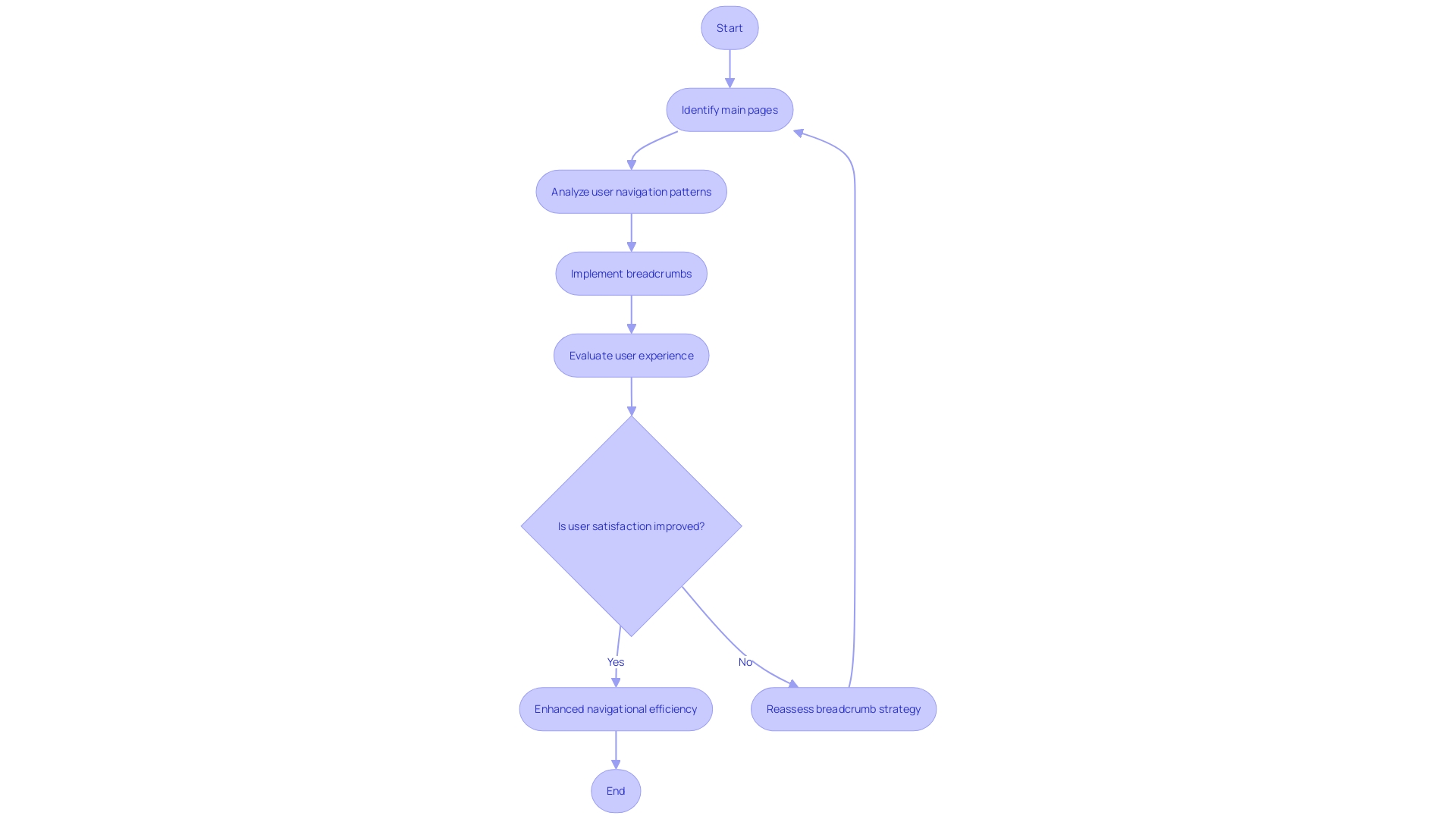
Internal Site Search with Intelligent Suggestions
Improving the satisfaction of individuals on online shopping platforms is not only about offering a wide range of items; it's about guaranteeing that individuals can easily locate precisely what they require. A sophisticated internal site search function is a game-changer here. By integrating intelligent search suggestions, users are presented with a seamless shopping journey. They no longer need to sift through countless pages; instead, they can swiftly locate their desired items. This streamlined process not only saves valuable time but also introduces them to products they might have otherwise missed, subtly guiding them towards additional purchases. In addition, adopting AI-powered search tools enables the freedom for individuals to engage with the search function as if they were in conversation with a knowledgeable sales assistant. This level of intuitiveness in search functionalities not only demonstrates an advanced technical infrastructure but also indicates to customers that their shopping journey is the platform's top priority. Data confirms the importance of investing in interface for individuals, particularly on mobile platforms where over 50% of website traffic originates. A mobile site that's both aesthetically pleasing and performance-optimized can significantly elevate conversion rates by up to 15% when it loads in two seconds or less. Furthermore, a positive mobile encounter can result in a greater probability of revisits and recommendations. Incorporating optimal techniques like a noticeable, transparent search box, live data stream updates, and auto-fill functionalities with visual recommendations can significantly improve the overall journey and result in higher conversion rates and customer loyalty.
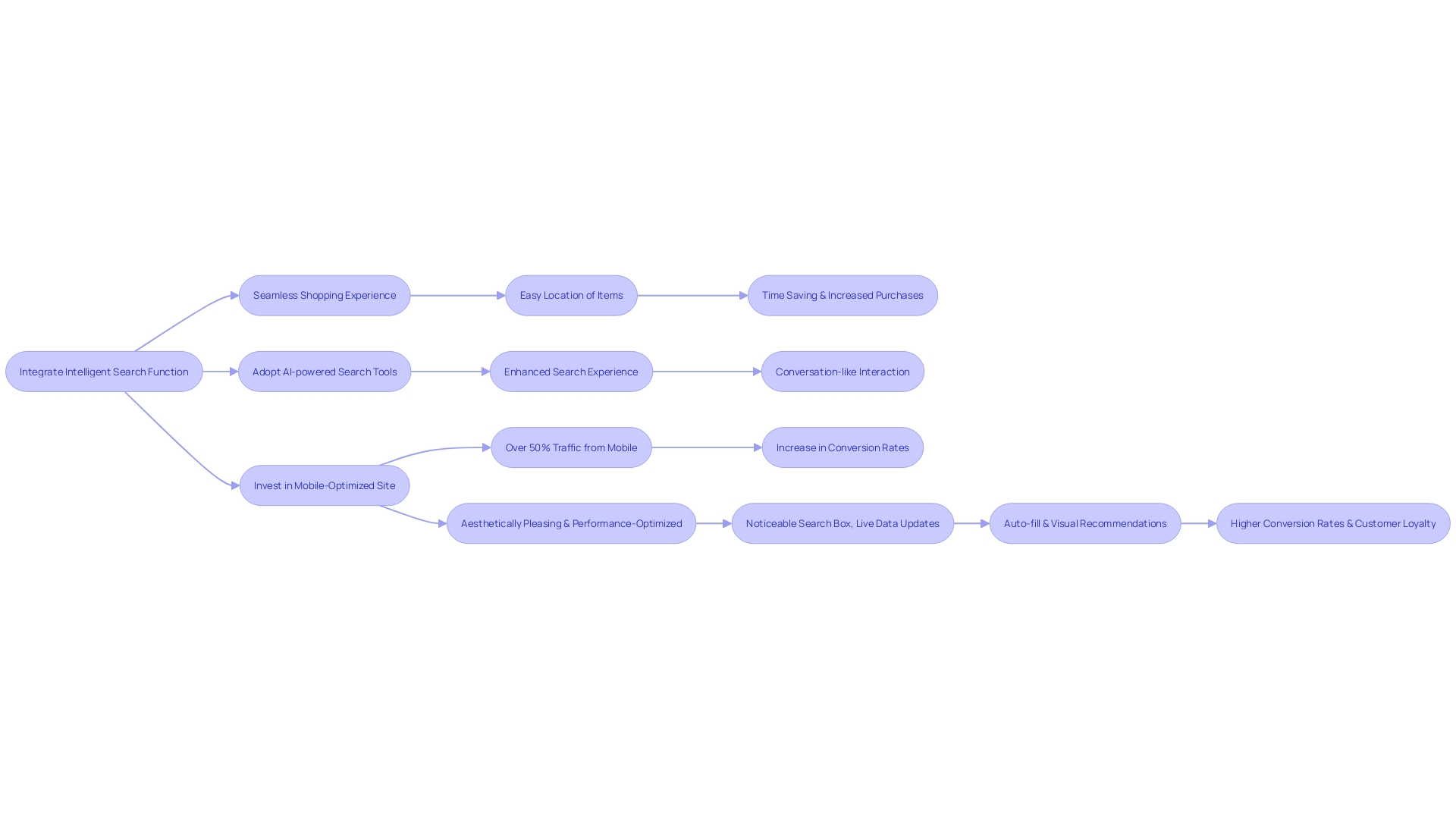
Product Filters for Efficient Product Finding
Improving the e-commerce experience is not only about providing a diverse selection of products; it's about ensuring a smooth journey from desire to purchase. To facilitate this, integrating Human Readable Filters into your website can be a game-changer. Visualize a search query that is organized like a conversational sentence, enabling individuals to engage with each element to enhance their search. This approach aligns with Jacob Nielsen's usability principles, emphasizing systems that communicate in the individual's language.
For instance, updating your product search with a specific data feed and real-time indexing can significantly improve search results. A clearly visible search box on all pages allows for easy access and enhances engagement. Moreover, Google's Shopping Graph showcases the significance of a customized shopping journey, with billions of up-to-date product listings offering individuals the precise items they're searching for.
In the fast-paced world of e-commerce, where people shop on Google over a billion times daily, the ability to quickly find what you're looking for is paramount. By taking into account the individual's investment of time and implementing Human Readable Filters, you're not only providing a product but also an instinctive and pleasurable shopping.
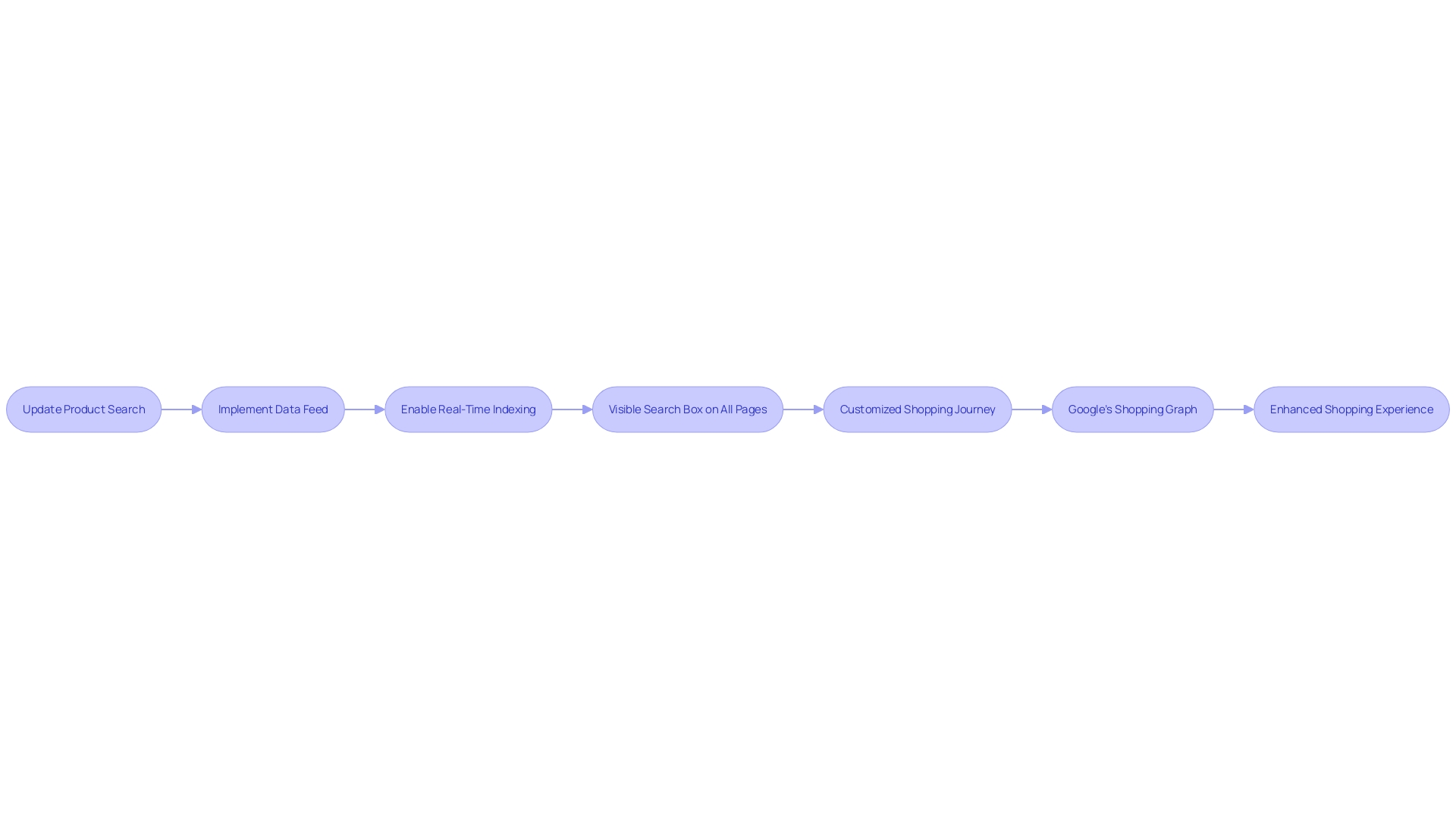
Footer Navigation for Easy Access to Key Information
Incorporating a comprehensive footer navigation menu can significantly improve the overall usability of an online store. This is not just about providing easy access to information; it's about creating a seamless experience that reflects the quality of your brand. Incorporating links to essential information like shipping and return policies, FAQs, and contact details in the footer ensures that these key elements are accessible from any page. This method is based on the realization that individuals may not always begin their journey on your homepage. By offering clear pathways back to critical content, you're essentially providing a safety net for individuals to find their way.
Furthermore, a user-friendly footer can greatly decrease the amount of support inquiries. This is demonstrated by the European Accessibility Act, which highlights the importance of digital accessibility. With 27% of Europeans having a disability, it's crucial that online stores cater to a diverse range of needs. By considering users who rely on assistive technologies, such as keyboard navigation or screen readers, and including direct links to the homepage, you not only comply with legal obligations but also ensure that your store is welcoming to all consumers.
Additionally, an intuitive and well-designed website, including the footer, can influence customer perception and trust, as suggested by experts. As we see the convergence of commerce, content, and culture, it's clear that brand building is increasingly happening within the digital commerce space. Retail giants like MediaMarkt are setting new standards with their 'Lighthouse' concept, combining technology, and service in their physical stores. A similar philosophy can be employed in online spaces, where the digital encounter must be cohesive, engaging, and accessible to all.
The inclusion of a footer navigation is not an afterthought but a strategic move towards creating a comprehensive experience that resonates with users and encourages engagement, ultimately contributing to the success of the online platform.
Product Videos and High-Quality Images
Visuals are crucial in the online shopping landscape, where the tactile experience of in-store shopping is absent. High-resolution images paired with engaging product videos can bridge this sensory gap, providing customers with an in-depth look at your products. This visual revolution in online shopping demands that online trading platforms deliver crisp imagery swiftly, without compromising on loading speeds. It's a delicate balance but one that reaps rewards as consumers are more likely to explore, click, and ultimately purchase when captivated by compelling visual content.
The impactful influence of video in the digital shopping encounter is further confirmed by statistics, showing that consumers retain significantly more information when presented with visuals compared to text alone. Infographics and visual marketing are especially potent, with marketers noting a marked increase in audience understanding and retention when using these tools.
Case studies, such as that of a prominent European online fashion platform, emphasize the significance of automated, detailed tagging and description generation for millions of product images to improve searchability and user experience. Similarly, businesses like A1 SolarStore underscore the necessity of high-quality content that goes beyond SEO optimization to truly engage readers.
As we navigate this visual-centric market, the responsibility lies with online business directors to ensure their websites reflect this shift. By utilizing AI and machine learning technologies, as explored in a Coresight Research and Infinite webinar, online selling platforms can not just enhance their visual content but also optimize the procedure, conserving time and resources while improving the buyer's experience.
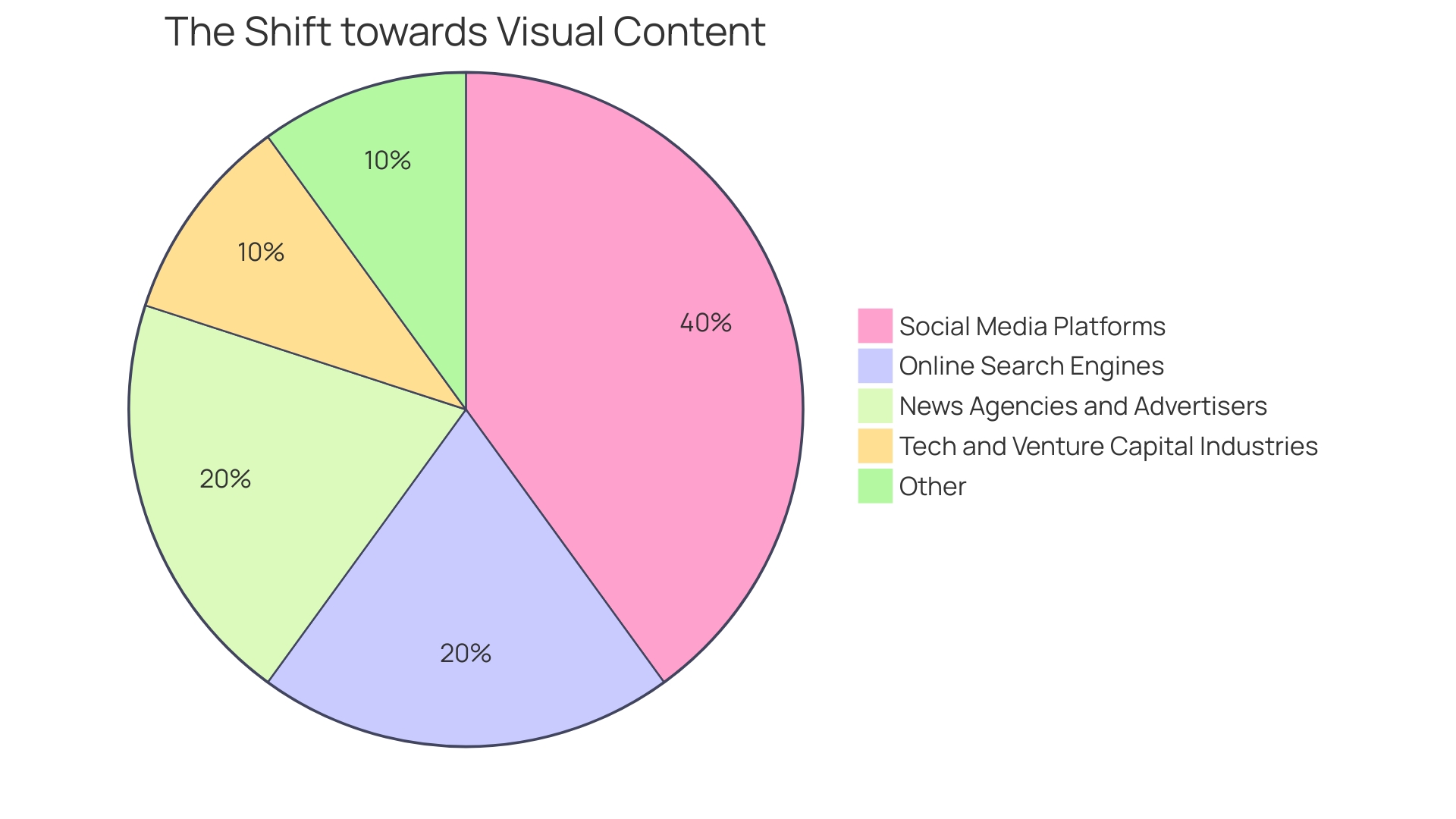
Personalized E-commerce Experiences
Utilizing the potential of customization in online retail isn't just a fad; it's the foundation of a thriving digital shopping journey. The modern consumer carries a computer in their pocket and expects to interact with brands on their terms, through their chosen channels. Personalization begins with recognizing and respecting these preferences.
By immersing themselves in the realm of personalized e-commerce, merchants can transform their platforms into digital mirror images of physical stores, where the sales assistant knows each individual by name and preference. It's about crafting an experience where product recommendations, and marketing messages feel bespoke to each individual.
Using data from shoppers, online merchants can create operator-generated collections, which include popular and seasonal items, curated to resonate with the shopper's interests. This method not only enhances satisfaction of buyers but also boosts sales by reducing rates of cart abandonment.
As Elizabeth Tobey of NICE highlights, personalization is meeting your target audience where they want to be met. This sentiment is echoed in the online marketplace, where consumers are requesting for more personalized shopping encounters. It's not just about the sale; it's about making individuals feel understood and valued.
Another facet to consider is the impact of personalization on brand loyalty. A customized encounter can cultivate a connection similar to stepping into a beloved coffee shop where the barista knows your order. This level of familiarity is what differentiates brands in a crowded market and can lead to a natural increase in conversions.
To achieve personalization at scale, brands must overcome strategic, technological, and data-related barriers. Through the creation of a cohesive strategy for collecting and analyzing data on consumers, all divisions have the opportunity to enhance the overall satisfaction of clients, leading to increased prosperity, originality, and brand worth.
Personalization is not an end goal but a continuous journey of understanding and catering to the client's evolving needs. It's an investment in the shopping journey that yields returns in customer loyalty and business success.
User-Friendly Website Design and Responsive Layout
A top-notch e-commerce website should offer more than just a visually appealing interface; it must be a blend of beauty and functionality. An intuitive design not only simplifies navigation but also facilitates a smooth journey from product exploration to final purchase. A responsive layout is crucial, ensuring that your site delivers a consistent, optimized outcome, whether accessed through desktops, tablets, or mobile devices.
Love, Bonito Malaysia demonstrates this through their online platform, where the complete collection is available for convenient shopping, and a straightforward checkout process improves the user journey. Their emphasis on quality materials and designs that empower women to feel confident mirrors the importance of aligning a website's functionalities with the brand's vision.
'MediaMarkt's 'Lighthouse' concept, encompassing technology and engagement, emphasizes the value of a responsive and immersive digital presence'. Similarly, Vendredi Society's website redesign showcases how every element from UI to copywriting can communicate a brand's culture and vision, pushing the boundaries of creativity.
Quotes from industry leaders underscore the indispensability of responsive web design in today's digital marketplace. With over half the web traffic coming from mobile devices, and statistics highlighting the potential loss of customers due to poor mobile experiences, the necessity for responsive design cannot be overstated.
Incorporating features that align with your business goals, backed by thorough research and comparison of service providers, can significantly contribute to the success of your online store. The worldwide reach facilitated by a well-designed online trading platform can be a game-changer for any business aiming for growth and success.
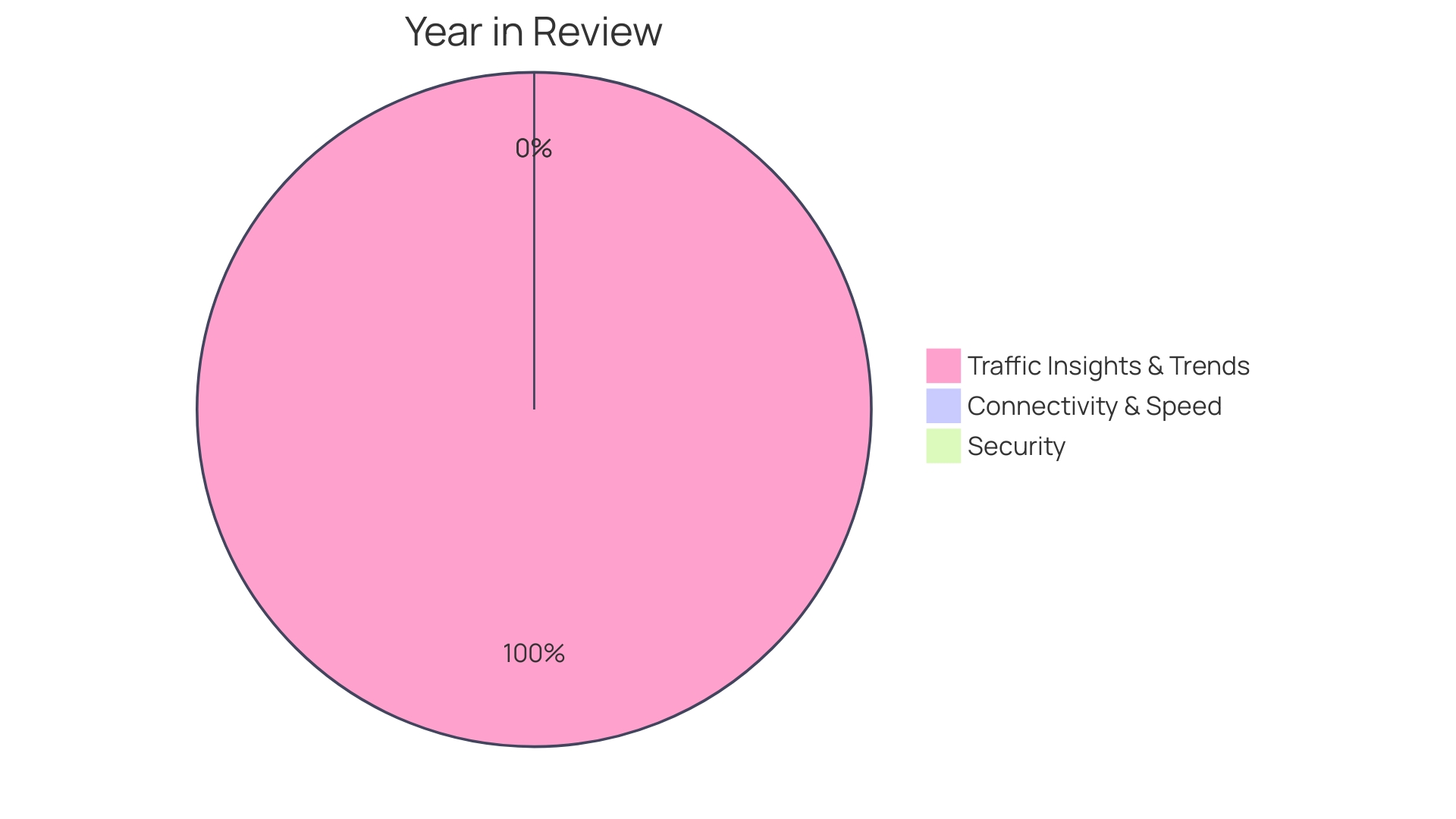
Fast and Secure Checkout Process
Optimizing the checkout process is paramount for e-commerce sites aiming to reduce cart abandonment and enhance conversion rates. Simplifying the buying process by reducing stages and providing secure, flexible payment choices can greatly enhance trust and streamline the purchasing journey. Features like guest checkout, storing payment details, and providing order tracking not only add convenience but also foster client loyalty and encourage repeat business. This approach is supported by insights from industry leaders who have identified payment experience as a key factor in checkout abandonment. Analysis of customer behavior underscores the necessity of a frictionless checkout to prevent potential buyers from leaving before completing their purchase. Moreover, statistical data shows the direct connection between a streamlined checkout procedure and enhanced conversion rates, which is crucial for online business achievement.
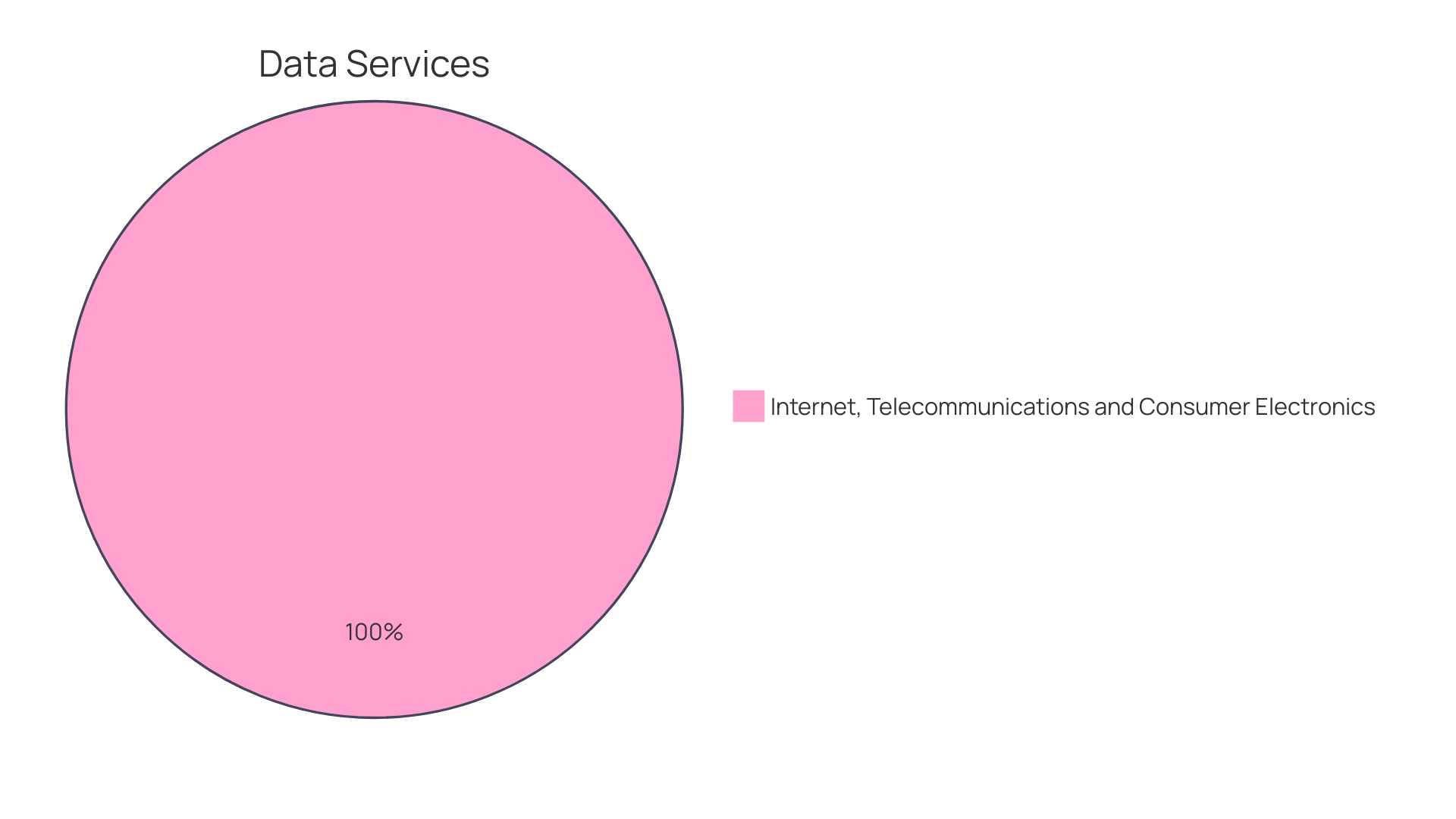
Accessibility Features for Inclusive Shopping
Improving the accessibility of your online business website goes beyond being considerate; it is a strategic decision that expands your digital reach and guarantees adherence to legal requirements. With the European Accessibility Act now in force, making digital accessibility a legal requirement for e-commerce, it's crucial to understand that a significant portion of the European population—27%, to be exact—lives with a disability. In the Netherlands, this figure rises to 32%.
To cater to the needs of all users, including those with motor or visual impairments who may rely on assistive technologies, your website must be navigable via keyboard controls, compatible with screen readers, and must include alternative text for images. These features align with the POUR principles of functional accessibility—making content Perceivable, Operable, Understandable, and Robust.
The 2023 report by the World Health Organization highlights the pressing nature of this issue, revealing that 16% of the global population undergoes some form of disability. As the prevalence of disabilities increases due to aging populations and chronic health conditions, ensuring your e-commerce platform accommodates everyone becomes not only a matter of legal compliance but also a moral imperative and a savvy business decision.
Keep in mind, by actively dealing with accessibility, you're not only expanding your market reach but also enhancing the user's interaction for all, strengthening a positive perception of your brand. In a world where online shopping is a lifeline for many, ensuring that no one is left behind due to a lack of accessible features is paramount.
Additional Features: Flash Sales, Social Shopping, and Wish Lists
Enhancing the online shopping experience through the introduction of dynamic features can have a significant effect on engagement and conversion rates. Flash sales, a powerful tool in the e-commerce arsenal, leverage urgency to encourage swift purchasing decisions. By establishing a time-sensitive shopping atmosphere, individuals are encouraged to act promptly, thereby increasing sales and generating excitement around products.
Social commerce elements are equally influential, enhancing the communal aspect of online shopping. User-generated content, such as reviews and ratings, not only builds trust but also serves as a form of social proof that can sway purchasing decisions. Social sharing buttons seamlessly integrate with social media platforms, making it effortless for individuals to spread the word about their preferred products, effectively amplifying your reach without additional marketing spend.
Moreover, wish lists are more than a convenience feature; they are a strategic tool for fostering client loyalty. By allowing shoppers to save items, you're not only customizing their interaction; you're also collecting data on their preferences. When combined with notifications about price reductions or product availability, wish lists can nudge customers towards making a purchase, often leading to repeat business.
To illustrate the potential of these strategies, consider the case of Gothrider Coffee, which differentiated itself in a saturated market through a unique brand identity and product bundling. By emphasizing a unique customer journey and brand worth, Gothrider Coffee has effectively established a specialized market presence in the competitive online business realm.
In the context of website performance and digital marketing, it's not just about adding features but ensuring they align with the overall user satisfaction and brand strategy. By analyzing competitor traffic and creating a content roadmap that addresses search intent, online stores can improve their SEO rankings, leading to higher visibility and more qualified leads.
Finally, current trends in the industry, like the rapid delivery times announced by Aliexpress and Amazon's Great Indian Festival sale, underscore the importance of a seamless shopping experience. These events demonstrate the potential of well-executed e-commerce strategies to captivate consumers and drive sales during peak shopping periods.
Importance of Fast Website Loading Times
The digital age has heightened the significance of web development in shaping interactions online. A robust web presence is pivotal for a business's visibility, customer engagement, and revenue. This online presence begins with a website's performance, particularly its loading speed. It's a crucial factor that influences individual satisfaction, which in turn impacts search rankings and conversion rates. Research suggests that a delay as small as one second in page response can result in a 7% reduction in conversions. To promote a favorable user encounter, it's crucial to optimize website loading times. Employing strategies such as reducing image file sizes, utilizing caching, and selecting a reliable hosting service can significantly enhance site speed. Retail Technology Review emphasizes the financial implications of slow websites, noting potential losses of up to £28.4 billion during peak shopping seasons. Prioritizing site performance is not just about aesthetics; it's about providing a seamless browsing experience that encourages customers to stay, engage, and ultimately convert. A swift, responsive website is the cornerstone of a successful e-commerce venture, as highlighted by case studies like the Ford Foundation's web improvements and the creation of a new video accessibility plugin for WordPress. These enhancements not only improve accessibility but also strengthen the foundation for increased content dissemination and user engagement.
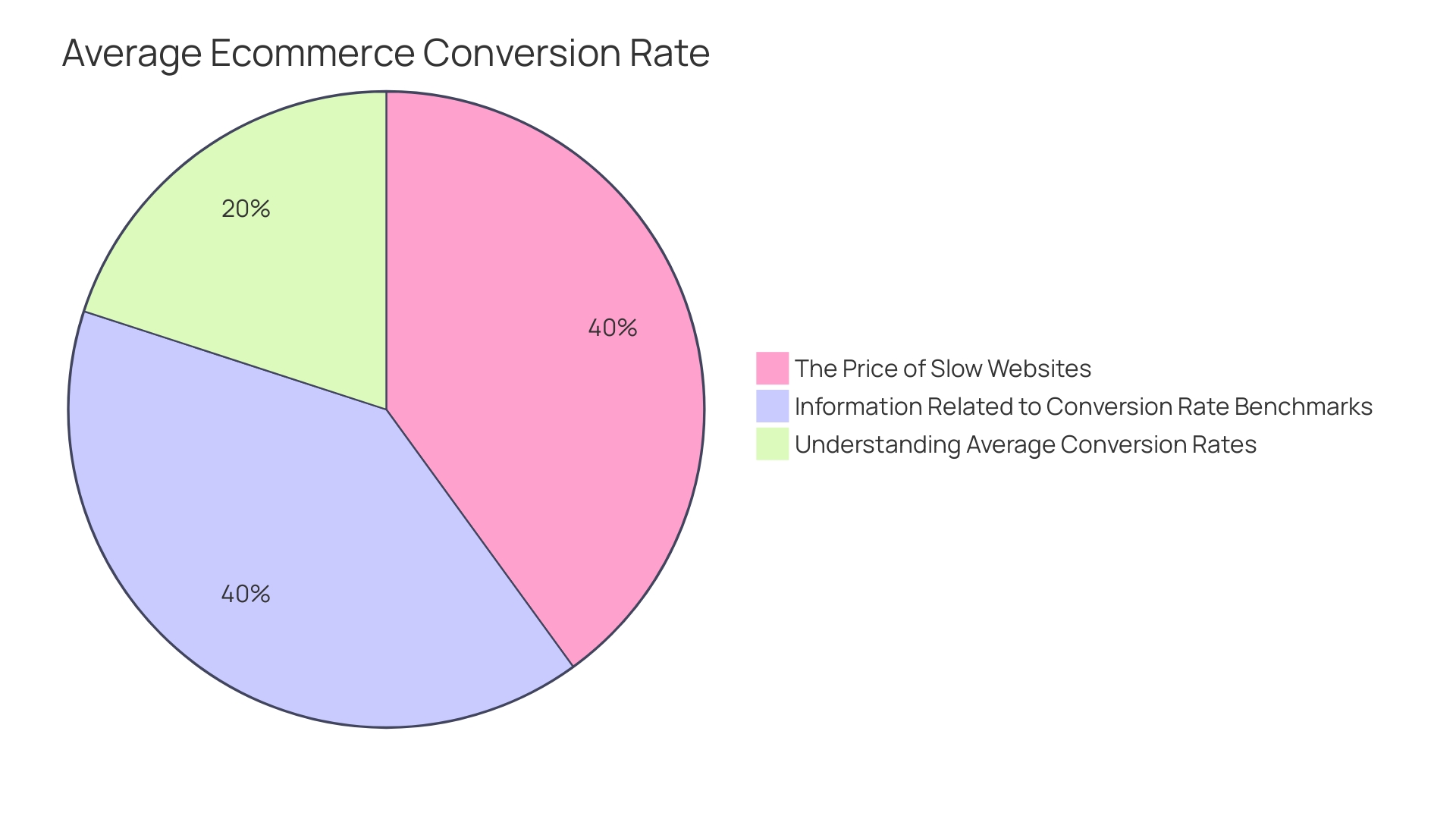
Transparent Customer Service and Return Policies
Constructing a straightforward and customer-centric return policy is fundamental to enhancing trust and encouraging repeat business. Your return policy should be easily accessible and digestible, with a clear outline starting from an introduction that explains its purpose. Define the eligibility criteria for returns, such as time constraints and product condition requirements, ensuring individuals comprehend the terms upfront.
Offer clients a range of return options, like online forms or direct interaction with the service team, to easily start their returns. Clarify the refund options available, whether it's a reimbursement to the original payment method or an issuance of store credit, to set proper expectations.
Address return shipping policies, specifying who bears the cost, and be transparent about any restocking or handling fees that may apply. Additionally, consider any special considerations for different product categories, such as electronics or perishables, to avoid confusion and dissatisfaction.
In the midst of a retail environment where $817 billion worth of returns took place in 2022, a quarter from e-commerce, establishing a policy that considers the needs of consumers and ensures the sustainability of the business is essential. As consumers increasingly expect free and easy returns, your policy must also reflect environmental and financial realities, potentially shifting expectations once more.
By providing an excellent customer service experience, you not only adhere to the rising standards of consumer satisfaction but also position your business for long-term growth and customer loyalty.
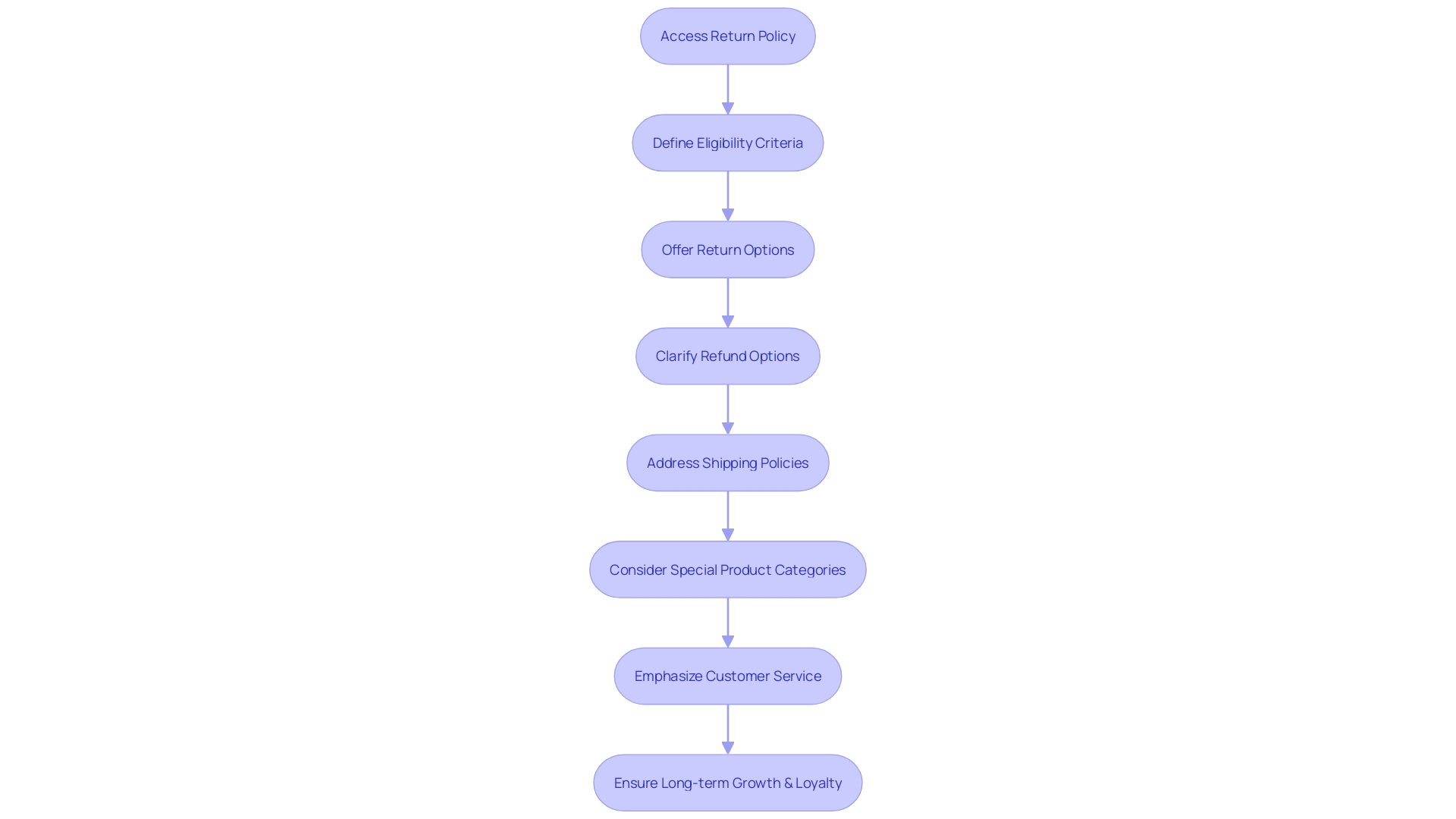
Conclusion
In conclusion, creating a seamless and user-centric e-commerce platform requires careful consideration of various key features. Breadcrumbs offer a clear hierarchical view of a user's location on the site, simplifying navigation and reducing bounce rates. Personalized e-commerce experiences cater to individual preferences, fostering customer satisfaction and loyalty.
User-friendly website design and responsive layouts ensure a consistent and optimized experience across devices. Fast and secure checkout processes enhance customer trust and simplify the purchasing journey. Accessibility features play a vital role in accommodating a diverse range of users and complying with legal obligations.
Additional features such as flash sales, social shopping, and wish lists elevate the online shopping experience and drive customer engagement. Fast website loading times are essential for retaining users and boosting conversion rates. Finally, transparent customer service and return policies build trust and encourage repeat business.
By incorporating these features, e-commerce platforms can create a comprehensive and user-centric experience that sets them apart in a competitive market. It is important for businesses to prioritize these aspects to position themselves as industry experts and provide authoritative advice and recommendations.





